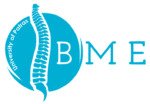| Code | EA4 |
| Type | Elective |
| Semester | A |
| ECTS credits | 5 |
| Teaching Staff | Stavros Koulouridis, University of Patras |
Aims & Objectives
Introduce students into the subject of interaction of non ionizing electromagnetic fields with biological media. After successful completion of the course, students should have acquired knowledge of / understand
Safety and Electromagnetic fields
Therapeutic applications of Electromagnetic Fields
Diagnostic applications of Electromagnetic Fields
Learning outcomes & Competences
After successful completion of the course, it is expected that students will have developed the following skills/competences
The ability to use safely devices that are based on electricity/magnetism.
The ability to understand device capabilities and limitations.
The capability to apply the knowledge they have acquired to analyze/design devices for therapeutic or diagnostic applications of electromagnetic fields.
The ability to select the most appropriate between the several techniques available for detection or therapy using electromagnetic fields.
The study skills needed for continuing professional development in academia or industry.
Prerequisites
Differential equations, geometry, electric circuits, basic knowledge of Maxwell equations.
Content
Electromagnetic Properties of Biological tissues. Non-ionizing radiation. Biological effects of electromagnetic fields. Safety regulations. Electromagnetic Field calculation inside the body: Numerical Methods. Therapeutic applications of EM fields. Ablation. Hyperthermia. Electric and Magnetic Stimulation Diagnostic Applications. Impedance Tomography. Impedance Plethysmography. Electroencephalography. Magnetoencephalography. Electrocardiography. Magnetocardiography
Recommended reading / Bibliography
J. Malmivuo and R. Plonsey, Bioelectromagnetism – Principles and Applications of Bioelectric and Biomagnetic Fields.
Instructor Notes Research
Papers
Teaching and learning methods
Powerpoint, Videos, simulations
Assessment
Written exam/project assignment.
